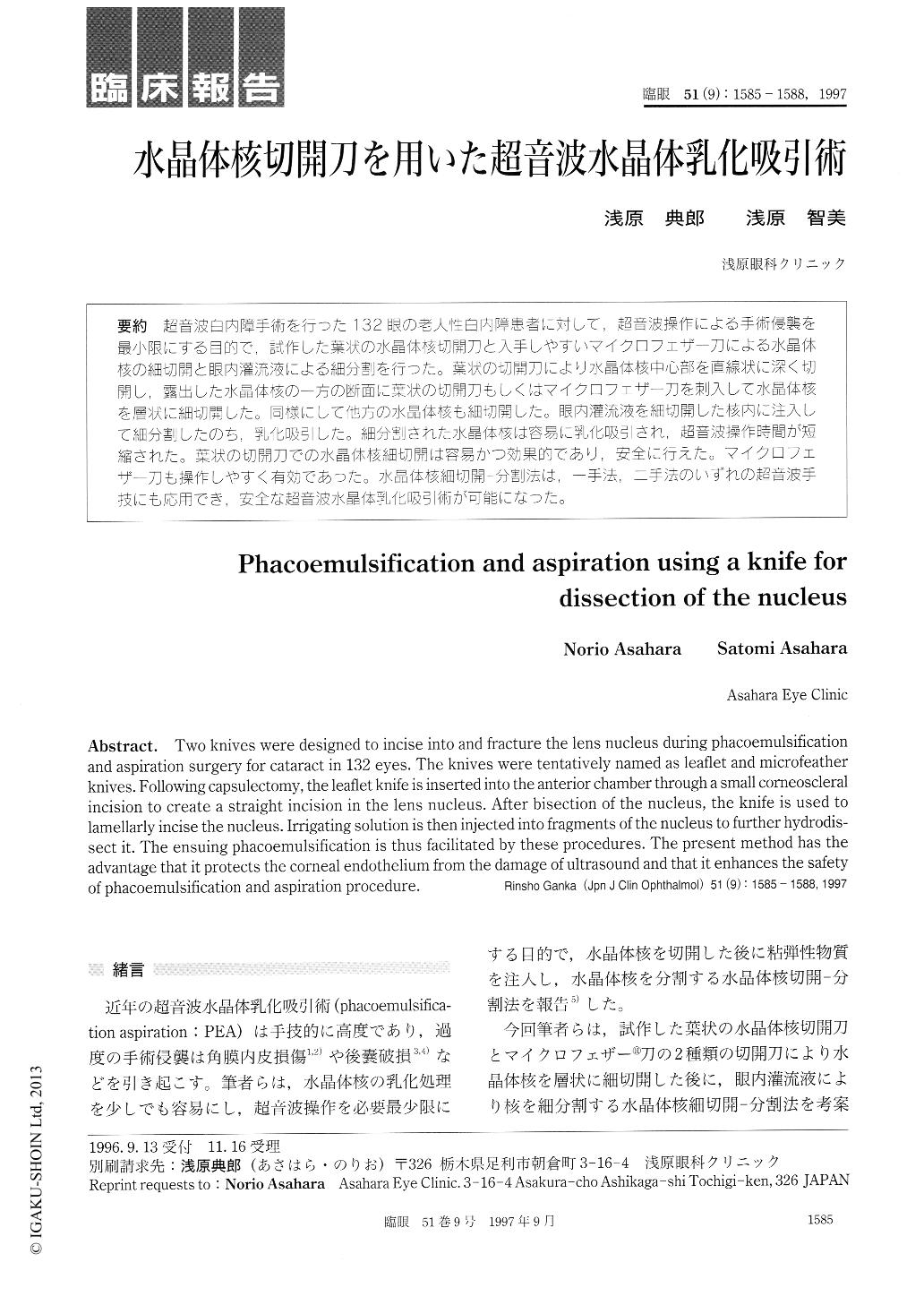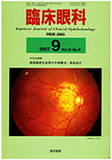Japanese
English
- 有料閲覧
- Abstract 文献概要
- 1ページ目 Look Inside
超音波白内障手術を行った132眼の老人性白内障患者に対して,超音波操作による手術侵襲を最小限にする目的で,試作した葉状の水晶体核切開刀と入手しやすいマイクロフェザー刀による水晶体核の細切開と眼内灌流液による細分割を行った。葉状の切開刀により水晶体核中心部を直線状に深く切開し,露出した水晶体核の一方の断面に葉状の切開刀もしくはマイクロフェザー刀を刺入して水晶体核を層状に細切開した。同様にして他方の水晶体核も細切開した。眼内灌流液を細切開した核内に注入して細分割したのち,乳化吸引た。細分割された水晶体核は容易に乳化吸引され,超音波操作時間が短縮された。葉状の切開刀での水晶体核細切開は容易かつ効果的であり,安全に行えた。マイクロフェザー刀も操作しやすく有効であった。水晶体核細切開—分割法は,一手法,二手法のいずれの超音波手技にも応用でき,安全な超音波水晶体乳化吸引術が可能になった。
Two knives were designed to incise into and fracture the lens nucleus during phacoemulsification and aspiration surgery for cataract in 132 eyes. The knives were tentatively named as leaflet and microfeather knives. Following capsulectomy, the leaflet knife is inserted into the anterior chamber through a small corneoscleral incision to create a straight incision in the lens nucleus. After bisection of the nucleus, the knife is used to lamellarly incise the nucleus. Irrigating solution is then injected into fragments of the nucleus to further hydrodis-sect it. The ensuing phacoemulsification is thus facilitated by these procedures. The present method has the advantage that it protects the corneal endothelium from the damage of ultrasound and that it enhances the safety of phacoemulsification and aspiration procedure.

Copyright © 1997, Igaku-Shoin Ltd. All rights reserved.


